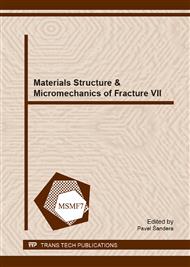p.3
p.14
p.22
p.30
p.39
p.43
p.47
p.51
Microscopic Mechanism of Hydrogen Embrittlement in Fatigue and Fracture
Abstract:
The microscope mechanism of hydrogen embrittlement (HE) is overviewed from the viewpoint of Mechanics-Microstructure-Environment Interactions. The plastic deformation (Mechanics) at crack tip for low strength steel is controlled by hydrogen concentration (Environment) to crack tip, eventually resulting in very strong time dependent phenomenon in static fracture and fatigue crack growth. Various typical phenomena in low strength steels which can be understood from the viewpoint of Mechanics-Environment Interactions will be presented. Fracture and fatigue of high strength steels (Microstructure) are strongly influenced by hydrogen. Especially, fatigue crack growth is remarkably accelerated by hydrogen-induced deformation twins. The HE phenomemon of the high-strength steels was applied to a newly inclusion rating method. Hydrogen trapped by nonmetalliec inclusions causes the elimination of fatigue limit at very high cycle fatigue. The values of threshold stress intensity factor KTH in hydrogen for small cracks are much smaller than those for long cracks measured by the standard WOL or CT specimens, which are eventually unconservative for the design of hydrogen components. This phenomenon is similar to the small crack problem in fatigue.
Info:
Periodical:
Pages:
3-13
Citation:
Online since:
November 2013
Authors:
Price:
Сopyright:
© 2014 Trans Tech Publications Ltd. All Rights Reserved
Share:
Citation:


